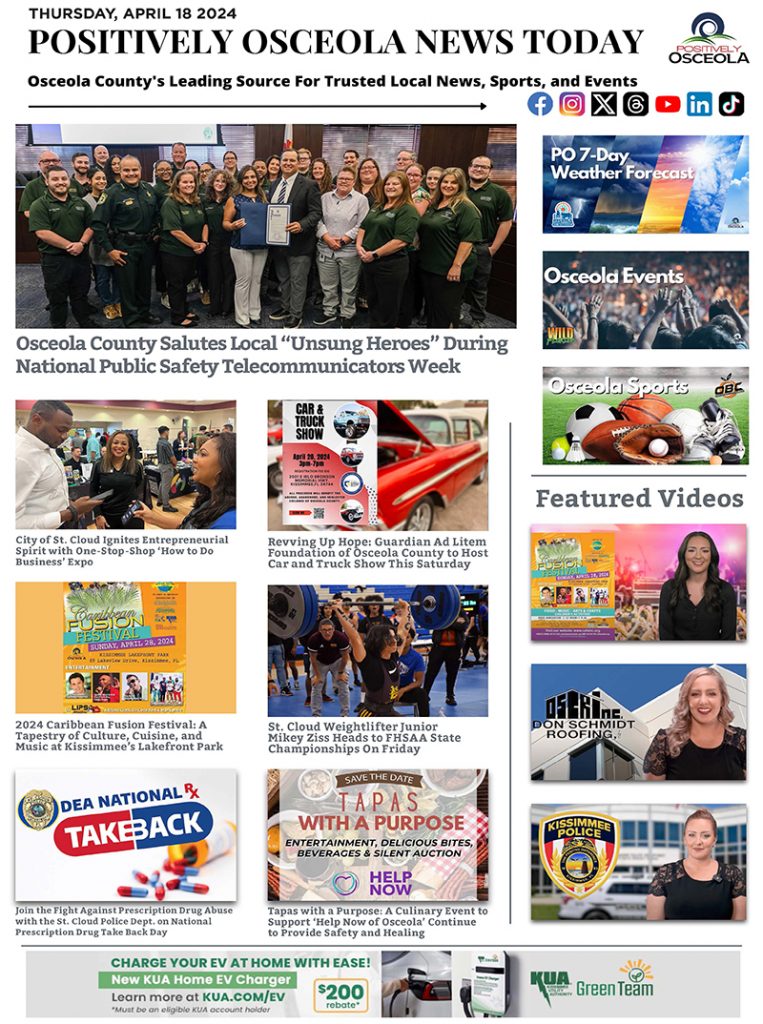Carol Guedes, RD
Dietitian
Orlando Health
We’re busy. We’re hungry. We don’t feel like cooking. More and more of us are relying on the convenience of takeout meals while also trying to eat healthy. Can we do both?
Fifty-four percent of adults say takeout and delivery is essential to their lifestyle — for millennials it’s 72 percent and 66 percent for Gen Z, a recent report shows. One-third of adults surveyed planned to increase their use of takeout. If you love the convenience but want to maintain a balanced diet, there’s good news: Restaurant managers are aware of both the uptick and consumers’ desire to eat healthier. So they’re generally more willing than ever to make modifications and share nutrition information.
It’s Your Choice
Sometimes it’s worth stating the obvious: No matter the cuisine, preparation or price point, these days most menus include healthy options. But it’s up to you to pick one. So when you’re sitting on the couch scrolling menus, remember the choice really is yours.
Of course, some cuisines make that more appealing than others. Take Thai food — the focus is on flavorful broths and fresh steamed vegetables. Chinese menus usually have similar options among myriad offerings; Japanese menus kick that up with exotic proteins like sashimi, a thinly sliced raw protein. Even cuisines like Italian almost always offer a fresh or spicy tomato sauce with that pasta you’re craving.
At fast-food restaurants, think about both preparation styles and portion sizes. (This is just as true for plant-based meals as any other.) A regular cheeseburger can give you the taste you love without the heft of a quarter-pounder, and a fiber-filled fruit cup or salad will keep you full longer than fries. Veggies are usually your friend — unless they’re soaked in butter or a cream sauce.
Reading the Signs
The FDA requires chain restaurants with 20 or more locations to post calories on menus and to make additional nutritional content available. But the latter isn’t always easily accessible in person. Luckily, if you’re ordering takeout you’re most likely online, so here are a few things to look for:
- Allergens. Do you have any food allergies? Online ordering can make this easier to check than in-person, where your server might not know for sure.
- Protein content. Protein helps keep you full longer and provides nutritional value, not just “empty” calories.
- Saturated fat. Being aware of the types of fat in your food preparation can help you limit unhealthy fats.
- Portions per serving. It can be a little shocking to discover that what looks like a small fries might actually be labeled as two or three portions. A restaurant steak might be sold at 6 or 8 ounces when the nutritional info is for a 3-ounce portion. (Upside: Abide by the recommended portion and you might get more than one meal out of that takeout order.)
- Added sugar. This is now required labeling on grocery store items and refers to sugar that has been added to the dish, not natural sugar content. Shoot for 5 grams or less per serving of added sugar.
Let Common Sense Guide You
Let’s say you’re doing movie night at a friend’s house, and she’s ordering. If you’re not actually looking at the nutritional content yourself, use experience and common sense to make a healthier choice. Think about your plate: Shoot for half vegetables or salad, one quarter carbs (bonus points for complex carbs like beans, whole-wheat bread, quinoa, barley or sweet potatoes) and one quarter protein.
Next, think about preparation: Can you request steamed veggies instead of sauteed? Is that protein grilled, fried or baked? Is there a sauce? Ask for it on the side. Small changes to a dish or presentation can add up to a big difference in your health over time, and most restaurants are happy to oblige you.
Stock Up and Save (Calories)
So your favorite takeout spot doesn’t offer fat-free salad dressing, or even oil and vinegar. But you’ve got that in your fridge or pantry, right? (We’ll wait while you check.) There’s no rule that says you can’t combine takeout with ingredients you keep on hand. Some good items for your grocery list:
- Salt-free seasonings made with herbs and spices, to jazz up simpler preparations
- Low-sodium soy sauce or coconut amino, a soy-free alternative made by fermenting palm sap and sea salt
- Garnishes like nuts, low-fat shredded cheese or bacon bits — best added by you if you want them, so you control amounts
Mindfulness Counts
For many people, the joy of takeout is that you don’t have to think about it. The food shows up and you eat it, bada bing! But mindful takeout won’t spoil your fun — you only have to do a little bit of work on the ordering end. It’s worth the small effort to request modifications like no extra salt or sauce on the side, so when the dish gets to you, you can enjoy it guilt-free, knowing that takeout can be part of a healthy lifestyle.
SOURCE: ORLANDO HEALTH

















